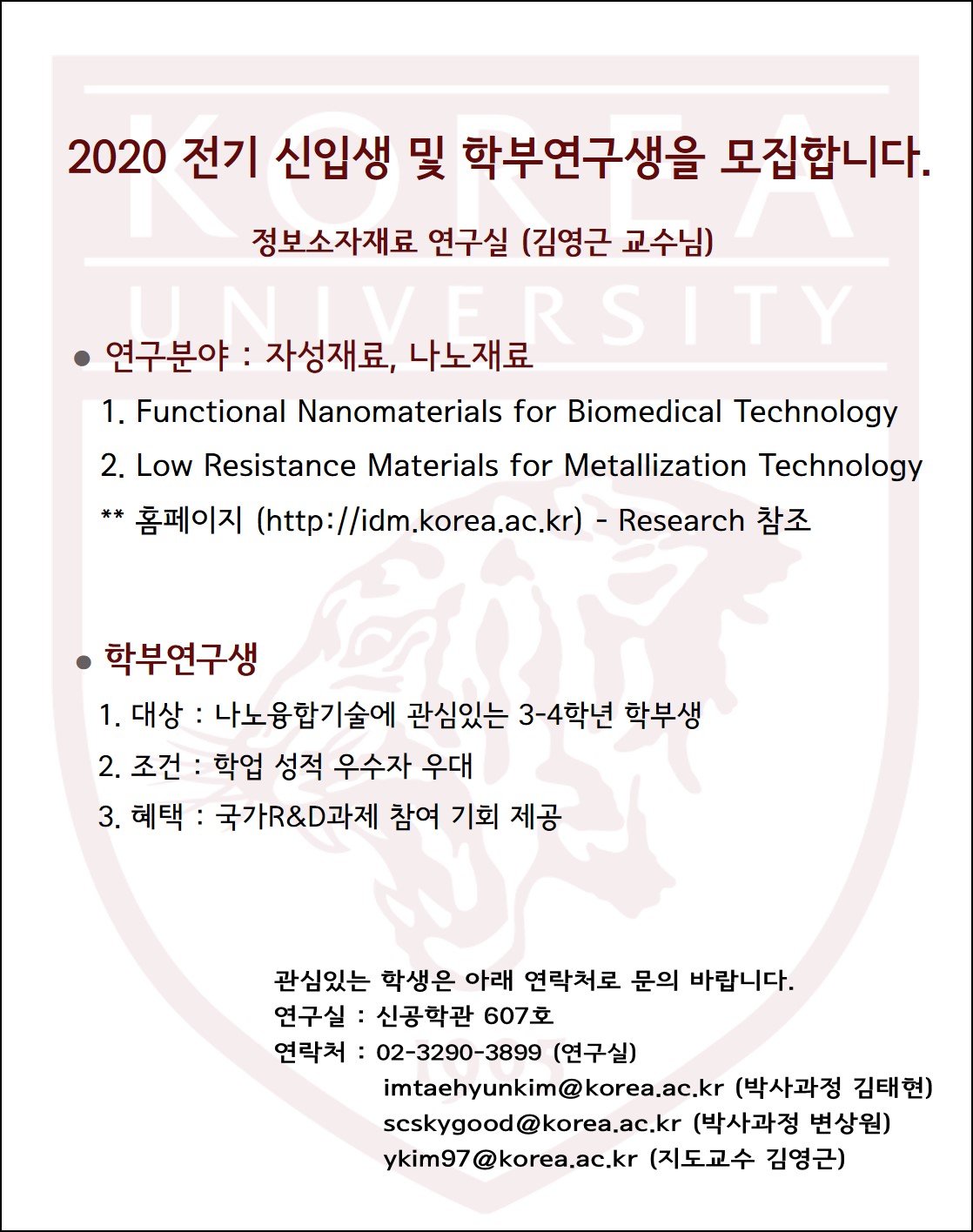고려대학교(총장 정진택)는 공과대학 신소재공학부 김영근 교수 연구팀이 전착 방법으로 성장시킨 금(gold) 나노선 어레이를 이용하여 세포성장이 가능한 미세환경을 구성하였고, 상피세포가 나노구조의 표면 특성에 의해 중간엽 세포로 전환되는 것을 확인했다고 지난 18일 밝혔다.
암으로 인한 사망원인의 90% 이상은 원발성 암 부위로부터 멀리 떨어진 곳으로 전이가 일어나는 것에 기인한다. 수술 등 치료법이 발달하고 항암제가 개발되면서 생존율은 높아지고 있지만 아직까지 재발, 전이된 암에서 효과적인 치료제가 없는 상황이며, 특히, 치료 실패의 주요 원인 중 하나가 치료제 내성이나 암세포의 전이를 유도하는 것으로 보고되고 있는 상피간엽이행(Epithelial-Mesenchymal Transition: EMT) 현상이다.
대부분의 고형암은 상피세포에서 기원하는데, EMT 현상은 상피세포였던 암세포가 중간엽 세포로 변하는 현상으로 이 과정을 통해 세포가 이동성과 침윤성을 획득해 암세포의 전이를 촉진한다. EMT 특성이 강한 암세포는 면역관문억제제 역시 잘 듣지 않는 것으로 알려져 있으며, 치료제 내성이나 암세포의 전이를 유도하는 것으로 보고되고 있다. 최근 EMT를 억제하거나 EMT를 유도함으로써 임상적으로 적용하여 새로운 항암전략을 수립하고자 하는 많은 시도들이 있으며, 특히, EMT 분자아형(molecular subtype) 위암에 대한 효과적인 치료표적과 동반진단 마커 발굴과 EMT 유도 세포를 이용해 표적 항암물질 개발을 위한 노력이 대표적이다.
EMT 과정 중 세포는 형태적 변형과 같은 물리적 특성과 생물 지표의 증감으로 구별이 가능하다. 연구팀은 금(gold) 나노선 어레이에서 성장하는 세포외곽의 미세구조를 전자현미경(SEM), 원자힘 현미경(AFM) 등으로 분석했고, 형광현미경으로 세포 초점 접착에 관여하는 단백질 분포를 확인하여 금 나노선 어레이에서 성장하는 세포의 형태적인 특징과 세포 내부의 분자적 특징이 연관되어 있음을 확인했다. 세포 형태 변형에 따른 내분 분자의 변화는 EMT과정의 생물지표인 비멘틴(vimentin)의 증가와 E-cadherin의 감소로 확인되며, 이는 세포의 초점 접착 변화가 EMT를 유도할 수 있다는 근거이다.
김영근 고려대 교수는 “이번 연구는 암세포의 EMT를 유도하는 환경을 구체화하여 암 전이와 관련된 생물학적 기능을 이해하는데 유용하며, EMT 유도 미세 환경을 구현하여 진단 및 항암제를 개발하는 새로운 전략을 제공할 수 있다. EMT 현상이 일어날 때에는 특정 생리활성 물질에 대한 의존성이 있으며 생리활성 물질의 기능을 억제하는 방식으로 EMT 활성이 강한 암세포를 선택적으로 제거할 수 있는 항암 치료법 개발이 가능하다.”라고 설명했다.
이번 연구 성과는 한국연구재단 중견연구자 지원사업과 이공학 개인기초 연구지원사업의 지원으로 수행됐으며, 연구결과는 재료과학 분야 최고 권위의 국제학술지인 어드밴스드 펑셔널 머티리얼즈(Advanced Functional Materials) 12월 3일자로 게재됐다.
Association between Cell Microenvironment Altered by Gold Nanowire Array and Regulation of Partial Epithelial-Mesenchymal Transition
Advanced Functional Materials 31 2008758 (2020)
[DOI: https://doi.org/10.1002/adfm.202008758]
Cell microenvironment is an essential factor in determining cell growth and cell fate. Many studies have been carried out to understand the functions and mechanisms of small molecules or growth factors/cytokines; however, the effects of the physical environment on cells are relatively unknown. Changes in the cell’s physical microenvironment affect cell adhesion and modify intracellular signaling controlled by adhesion properties, resulting in altering the cytoskeletal structure and cellular properties. Herein, it is demonstrated that the changes in cell adhesion can affect the epithelial-mesenchymal transition (EMT) of epithelial cells by implementing a cell microenvironment with a gold (Au) nanowire array to influence cell adhesion. A forcible decrease in cell adhesion leads to the downregulation of epithelial biomarkers and the upregulation of mesenchymal biomarkers. The results of force-distance experiments using atomic force microscopy showed that the overall stiffness of epithelial cells declined similarly to the case for mesenchymal-like cells. With this comprehensive analysis of cellular properties, a physical microenvironment for cell adhesion alteration is suggested, that can induce mesenchymal characteristics in both epithelial and mesenchymal cells through partial EMT.


